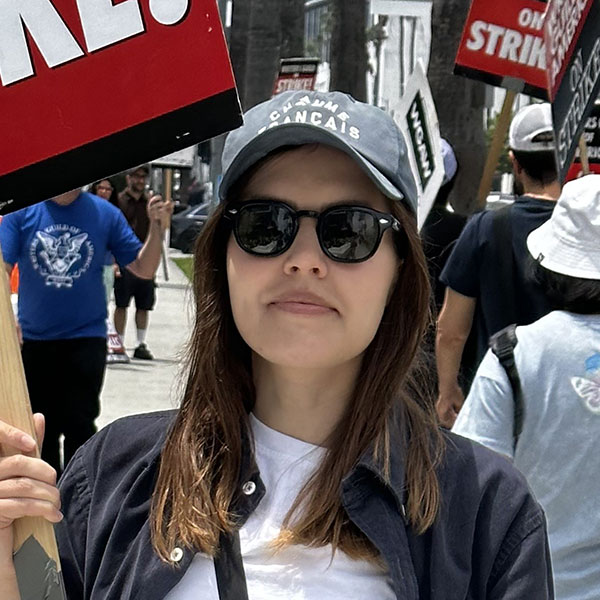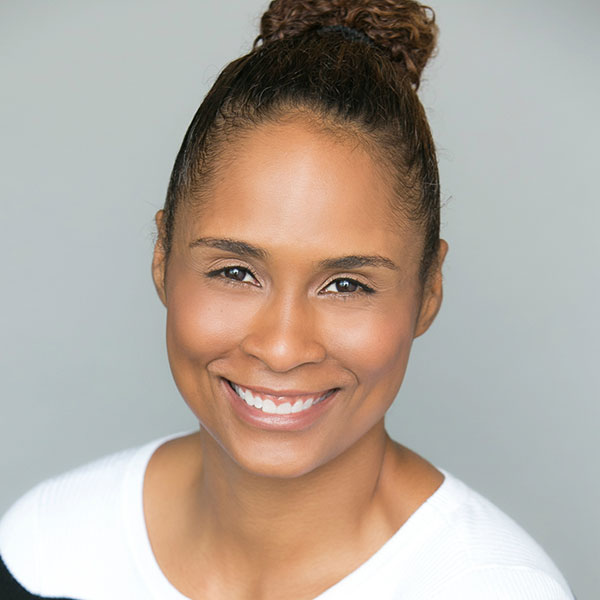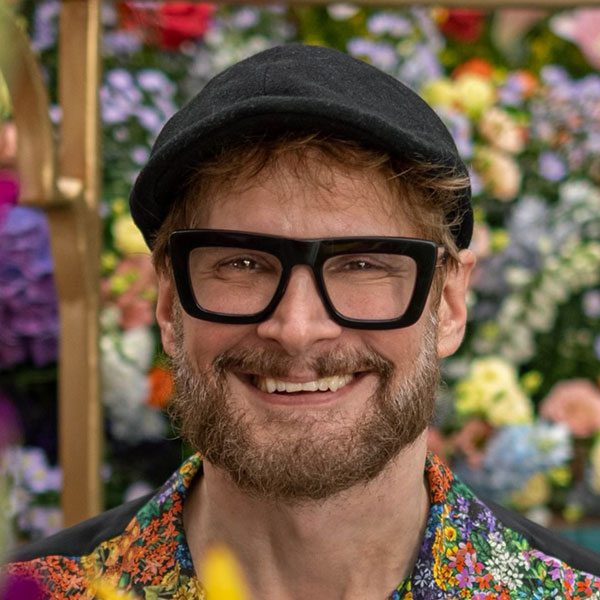Fear is personal. Whether it’s a stroll in the woods, a nail peeled off, or the possession of a beloved, what’s scary is subjective. The running and screaming or hiding and quieting of a story doesn’t need to consume page one, but a message needs to be sent.
“The burden of open scenes more than anything is to set the tone of the horror,” Maria Melnik (Alien: Earth) said. “Horror, maybe even more than any other genre, has so many subgenres. You may or may not be introducing the threat right away. Maybe you're building tension, maybe you're doing a cold open, but either way, I need to understand the tone of this movie.”
 Alien: Earth and Escape Room writer Maria Melnik.
Alien: Earth and Escape Room writer Maria Melnik.No matter the tone, take the actions as seriously as possible. That’s how M3GAN and Malignant writer Akela Cooper approaches even her most tongue-in-cheek material.
For Cooper, she’s writing scares more for the screen than the page. “There’s only so much you can do in script format to actually make it scary,” Cooper said. “Describing, ‘oh, they’re scared or terrified,’ I start thinking, what word haven’t I used yet for this emotion? I don’t think I’m writing things that are scary on the page; I am building something that will be scary on screen.”
She does however take satisfaction when her writing scares an executive.
Bryan Fuller, the mind behind Hannibal and the upcoming fairy tale horror picture Dust Bunny will turn in a 60-page outline for a 90-page script, half-joking that he's “the wrong asshole to ask” about horror writing.
 M3GAN and Malignant writer Akela Cooper. Photo by Erin Ross.
M3GAN and Malignant writer Akela Cooper. Photo by Erin Ross.“But I do remember reading the script for Silence of the Lambs,” Fuller said, “and noting how well-crafted those sequences were, being a very clever, clear economic adaptation of that book. Many of the scares I found to be representative of what we saw on the film.”
Melnik, who co-wrote the Escape Room films, approaches prose with a sharp knife. “It requires more sterilization,” she said. “Your language has to be more clipped and breathy in the pacing. You have to communicate a sense of disorientation and misdirection at times. To do that requires a subjective point of view versus basic stage direction. You have a narrow, more myopic point of view of the character, so the reader feels the tension with the characters.”
Cooper honed crafting action on American Horror Story, where she learned, if a character is looking around a dark corner or up at a ceiling, her lines must answer for the performer, “Why am I doing this?”
With dialogue, less is more for actors as well. “I was guilty of parentheticals in dialogue,” Cooper said. “I’ve cut way back on that now. If I’m doing my job with dialogue, it’s clear if a line is a joke or not. But if there’s nuance to it, then I will write that they ‘say this sarcastically.’ A lot of times it’s just for action lines. If there is action, I make sure the actor knows why they’re doing that action.”
Sometimes those actions require spotlight.
“There’s a line in Hannibal about how words are dangerous, that they’re pack hunters,” Fuller said. “It’s not just their meaning, but their shape as well. My brain will be pleased by the graphic nature of an all-caps word or sentence that gives more impact. It’s taking the words and either bolding them or underlining them or all-capping them so they have their moment in the spotlight.”

A lot of times the emotion of fear—it’s silent. Yes, we have screaming, but it's actually silent and paralyzing.
- Maria Melnik
All to illuminate character as well as scares.
“A lot of times the emotion of fear—it’s silent,” Melnik said. “Yes, we have screaming, but it’s actually silent and paralyzing. It can feel unnatural for the character to speak, so it’s about representing their behavior in a way that expresses fear. Unless your character is a trained operative, that behavior is almost always irrational on some level. It’s about focusing on this irrational behavior, and highlighting how it's specific to that character.”
Fuller’s scares call for an orchestral touch. Lightly pluck strings on the deep cello, bring in the bassoon, and let the trombone roar to create a wavelength of stimulation.
 Hannibal showrunner Bryan Fuller. Photo courtesy of Roadside Attractions.
Hannibal showrunner Bryan Fuller. Photo courtesy of Roadside Attractions.“It’s the juxtaposition of still moments with dynamic moments,” said Fuller. “There’s something about those quiet anticipatory moments of the scare or the danger. The moments that we disengage or avoid or navigate around are equally as important as the full-on engagement and evisceration of flesh.”
Cooper, who writes body horror with a grin, is no stranger to dismantling the human form in Final Draft. In a film with an impressive body count like Malignant, she balanced leaving blood on the page and saving plenty for the director.
“I did not know James [Wan] was going to have [the villain] Gabriel—WWE-style—throwing chairs at cops,” Cooper said. “It was fun writing the gloves coming off, blood and gore hitting the fan. I did let loose on that, but I had the safety net of James Wan directing, so I didn’t have to go too far on the page. When Gabriel reveals himself in the jail cell, I wrote, ‘It becomes a hurricane of blood and guts.’ James took it from there.”
Subversion is an integral ingredient for Melnik in eliciting fear in her blood-splattered action. “My favorite horror set pieces have this innate element of uncanniness, something physically or emotionally out of place,” Melnik said. “Humans depend on categorizing and predicting behaviors, social roles. When that’s thrown out of whack is where a lot of fear comes from. Your nightmares are not supposed to hurt you in real life. Sleep is supposed to be a place of reprieve and haven—except for if you’re on Elm Street.”
The more believable a character, the more tangible the scare. Or as Cooper put it, “If you don’t care about the characters, then you’re not going to care about the horror.”
Before a character bites the bullet—or more aptly, eats a chainsaw—their life should register as strongly as their death. “If I ever write a script where a character is smoking, it will always be Pall Mall cigarettes, what my grandfather smoked and not a well-known brand,” Cooper explained. “It says something that that person is smoking that brand of cigarette as opposed to a Marlboro. It’s the little touches.”
Those personal touches enliven death scenes. Whether a death scene is hilarious or tragic or both, it needs specificity.
“Death is a very alien experience,” Melnik said. “There’s an inherent grotesqueness to somebody who was here two seconds ago and then no longer here. A monster death or somebody becoming rigid on the hospital bed, their features hardened—go into the uncomfortable details of death.”
Horror is a bloody, rusty playground for introspection. In puddles of red, cornfields afire, or towers of terror, lines of fright benefit most of all from an element of soul.
“I can write a better script if I’ve chipped off a piece of myself and put it in a character or situation," Fuller said. “There’s a lot about [my film] Dust Bunny that is, on one level, personal about growing up in a violent home. The monster I was afraid of wasn’t under my bed, but it was under the roof with me. For me, horror movies became the fictional space where I could don armor that would protect me in nonfictional spaces.”
“Any pillar of safety that gets knocked out and turns monstrous,” Melnik concluded, “is universally horrific.”






